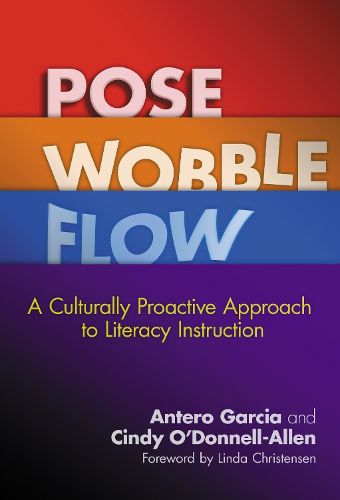Readings Newsletter
Become a Readings Member to make your shopping experience even easier.
Sign in or sign up for free!
You’re not far away from qualifying for FREE standard shipping within Australia
You’ve qualified for FREE standard shipping within Australia
The cart is loading…






This book proposes a pedagogical model called Pose, Wobble, Flow to encapsulate the challenge of teaching and the process of growing as an educator who questions existing inequities in schooling and society and frames teaching around a commitment to changing them. The authors provide six different culturally proactive teaching stances or poses that secondary ELA teachers can use to meet the needs of all students, whether they are historically marginalized or privileged. They describe how teachers can expect to wobble as they adapt instruction to the needs of their students, while also incorporating new insights about their own cultural positionality and preconceptions about teaching. Teachers are encouraged to recognize this flexibility as a positive process or flow that can be used to address challenges and adopt ambitious teaching strategies like those depicted in this book. Each chapter highlights a particular pose, describes how to work through common wobbles, incorporates teacher voices, and provides questions for further discussion. Pose, Wobble, Flow presents a promising framework for disrupting the pervasive myth that there is one set of surefire, culturally neutral best practices.
$9.00 standard shipping within Australia
FREE standard shipping within Australia for orders over $100.00
Express & International shipping calculated at checkout
This book proposes a pedagogical model called Pose, Wobble, Flow to encapsulate the challenge of teaching and the process of growing as an educator who questions existing inequities in schooling and society and frames teaching around a commitment to changing them. The authors provide six different culturally proactive teaching stances or poses that secondary ELA teachers can use to meet the needs of all students, whether they are historically marginalized or privileged. They describe how teachers can expect to wobble as they adapt instruction to the needs of their students, while also incorporating new insights about their own cultural positionality and preconceptions about teaching. Teachers are encouraged to recognize this flexibility as a positive process or flow that can be used to address challenges and adopt ambitious teaching strategies like those depicted in this book. Each chapter highlights a particular pose, describes how to work through common wobbles, incorporates teacher voices, and provides questions for further discussion. Pose, Wobble, Flow presents a promising framework for disrupting the pervasive myth that there is one set of surefire, culturally neutral best practices.